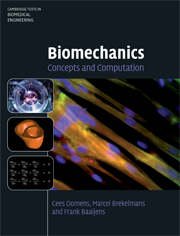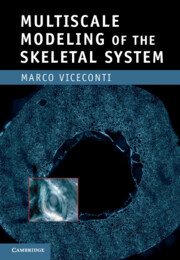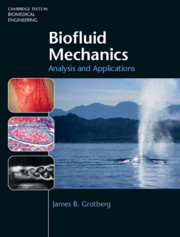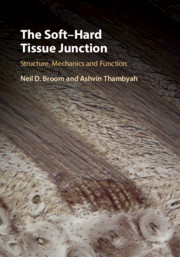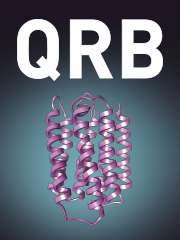Lung Mechanics
An Inverse Modeling Approach
£93.99
- Author: Jason H. T. Bates, University of Vermont
- Date Published: July 2009
- availability: Available
- format: Hardback
- isbn: 9780521509602
£
93.99
Hardback
Other available formats:
eBook
Looking for an inspection copy?
This title is not currently available on inspection
-
With mathematical and computational models furthering our understanding of lung mechanics, function and disease, this book provides an all-inclusive introduction to the topic from a quantitative standpoint. Focusing on inverse modeling, the reader is guided through the theory in a logical progression, from the simplest models up to state-of-the-art models that are both dynamic and nonlinear. Key tools used in biomedical engineering research, such as regression theory, linear and nonlinear systems theory, and the Fourier transform, are explained. Derivations of important physical principles, such as the Poiseuille equation and the wave speed equation, from first principles are also provided. Example applications to experimental data throughout illustrate physiological relevance, whilst problem sets at the end of each chapter provide practice and test reader comprehension. This book is ideal for biomedical engineering and biophysics graduate students and researchers wishing to understand this emerging field.
Read more- Guides the reader through the inverse modeling approach in a logical progression, from simple models through to dynamic and nonlinear models
- Derives key physical concepts describing lung function from first principles
- Explains key tools used in biomedical engineering research, such as regression theory, linear and nonlinear systems theory, and the Fourier transform
Reviews & endorsements
'In a clearly written language, Jason Bates provides a grand tour into the frontiers of the bioengineering of lung mechanics and physiology. The reader is elegantly led through the intricacy and beauty of forward and inverse modeling applied to the lung with plenty of examples for the physiologist, problems for the teacher, insight for the scientist and even some food for the philosophically oriented.' Bela Suki, Boston University
See more reviews'This book aims to provide physiologists and medical professionals interested in lung mechanics an understanding of the mathematics behind modeling. In my view, Jason Bates has succeeded. While the depth of the mathematics may be daunting, the explanations are clear and Jason takes the readers by the hand and leads them gently through the maze, arriving on the other side enlightened! No where is this more obvious than I the chapter on the derivation of the constant phase model and hysteresivity. These have become family names to modern respiratory physiologists; however, I would venture that the majority who use them do not understand them. Reading Jason's book allows a much greater understanding of these and other common concepts in modeling the mechanical behaviour of the lungs. I recommend this to all currently in the field and those wanting to enter. Well done!' Peter Sly, Telethon Institute for Child Health Research
'In a clearly written language, Jason Bates provides a grand tour into the frontiers of the bioengineering of lung mechanics and physiology. The reader is elegantly lead through the intricacy and beauty of forward and inverse modeling applied to the lung with plenty of examples for the physiologist, problems for the teacher, insight for the scientist and even some food for the philosophically oriented.' Bela Suki, Boston University
'This is a very well-written book which fulfills a major need for a thorough and quantitative analysis of respiratory mechanics. Moreover, Dr Bates does a superb job at simplifying rigorous applied mathematical theory such that practicing clinicians and life scientists with little to no mathematical training can be proficient in concepts that have traditionally been the domain of graduate-level engineers and physicists.' David W. Kaczka, Johns Hopkins University
'This long-needed textbook identifies and then bridges the gap between the classical views on lung mechanics and the experimental evidence; an enormous help for students and a valuable teaching resource for lecturers and senior researchers.' Zoltán Hantos, University of Szeged, Hungary
Customer reviews
Not yet reviewed
Be the first to review
Review was not posted due to profanity
×Product details
- Date Published: July 2009
- format: Hardback
- isbn: 9780521509602
- length: 236 pages
- dimensions: 253 x 180 x 15 mm
- weight: 0.63kg
- availability: Available
Table of Contents
Preface
Notation
1. Introduction
2. Collecting data
3. The linear single-compartment model
4. Resistance and elastance
5. Nonlinear single-compartment models
6. Flow limitation
7. Linear two-compartment models
8. The general linear model
9. Inverse models of lung impedance
10. Constant phase model of impedance
11. Nonlinear dynamic models
12. Epilogue
References
Index.Instructors have used or reviewed this title for the following courses
- Aerosol Science and Technology
- Aerosols in the Respriatory Tract
- Biological materials, mechanics and processes
- Biomechanics and Rehabilitation Engineering
- Biomedical Signals and Systems
- Biomedical Systems Modeling and Analysis
- Computational modeling of biomedical systems
- Quantitative Physiology for Engineers
Sorry, this resource is locked
Please register or sign in to request access. If you are having problems accessing these resources please email [email protected]
Register Sign in» Proceed
You are now leaving the Cambridge University Press website. Your eBook purchase and download will be completed by our partner www.ebooks.com. Please see the permission section of the www.ebooks.com catalogue page for details of the print & copy limits on our eBooks.
Continue ×Are you sure you want to delete your account?
This cannot be undone.
Thank you for your feedback which will help us improve our service.
If you requested a response, we will make sure to get back to you shortly.
×

